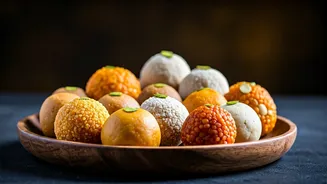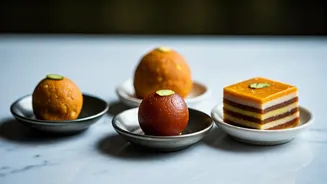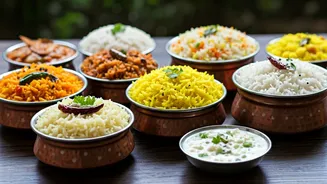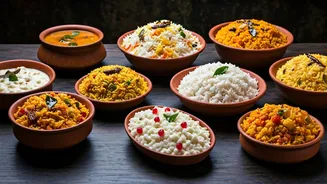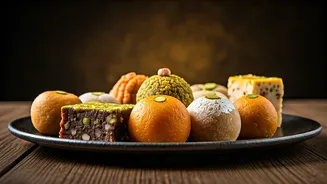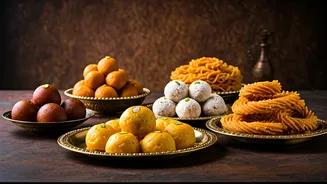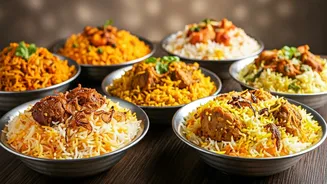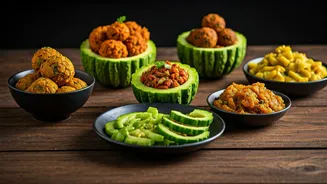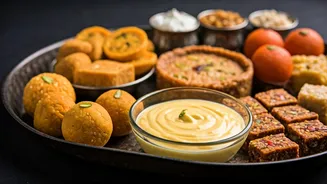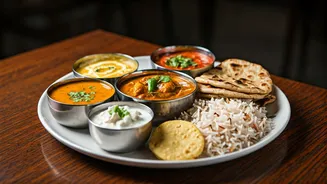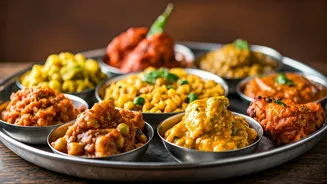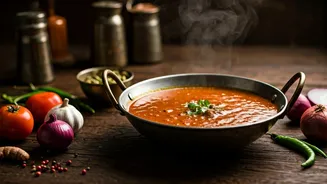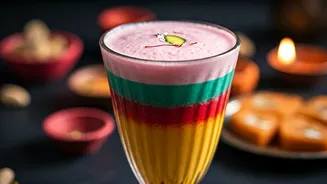Laddus: Sweet Beginnings
Laddus, small, spherical sweets originating from the Indian subcontinent, hold a special place in Indian culinary traditions. Their preparation often involves
combining flour, fat (usually ghee), sugar, and various other ingredients like nuts, seeds, and dried fruits. The mixture is then shaped into balls. Laddus are not merely desserts; they are often associated with festivals, celebrations, and religious occasions. They symbolize prosperity and good fortune, making them an integral part of Indian culture. Each region and community has its own unique variations, reflecting local ingredients and preferences. The variations can be seen in the ingredients used, from the type of flour (besan, rava, or wheat flour) to the sweeteners (jaggery or sugar) and the add-ins like nuts, seeds, and dried fruits. These variations lead to a broad spectrum of flavors and textures. The art of laddu-making is often passed down through generations, making the recipes a treasure trove of cultural heritage. The simplicity of the ingredients belies the complexity of the flavors achieved, making laddus a beloved treat across the Indian subcontinent.
Rajgira & Coconut Laddu
Rajgira, also known as amaranth flour, lends a unique texture and nutritional boost to laddus. Combined with the sweetness of coconut and the richness of brown sugar, these laddus offer a delightful combination of flavors and textures. The use of brown sugar provides a caramel-like depth that complements the earthy notes of rajgira and the tropical essence of coconut. These laddus are an excellent option for those seeking a healthier take on traditional sweets, as rajgira is a gluten-free grain packed with protein and fiber. The coconut adds healthy fats and a pleasant chewiness to the laddus. The careful balance of these ingredients results in a sweet treat that is satisfying and nutritious. These laddus can be enjoyed anytime and are often made during fasting periods due to the nutritional benefits of rajgira.
Dalia & Poppy Seed
Dalia, or broken wheat, forms the base of another delicious laddu variation. The addition of poppy seeds adds a delightful crunch and subtle nutty flavor. This combination is often enhanced by the addition of coconut, which brings in a tropical flavor. Dalia provides a slightly grainy texture, contrasting with the tiny poppy seeds. Poppy seeds, besides contributing to the taste, also offer nutritional benefits, including calcium and fiber. The coconut adds moisture and a hint of sweetness, binding all the ingredients together. These laddus are relatively easy to make, and they offer a good balance of flavors and textures, making them a popular choice for various occasions. The toasty flavor of the dalia, the slight crunch of the poppy seeds, and the sweet touch of coconut make for a satisfying treat.
Sesame & Almond Laddu
Sesame seeds and almonds are a classic pairing that creates a rich and wholesome laddu. Sesame seeds offer a nutty flavor and a satisfying crunch, while almonds provide a creamy texture and added nutritional value. This combination is particularly popular during festivals like Sankranthi, where sesame is considered auspicious. The natural oils in the sesame seeds, when roasted, enhance the flavor and aroma of the laddus. Almonds contribute to a smoother, slightly softer texture and boost the protein content. Often, a sweetener like jaggery is used to bind the ingredients and add a deep, molasses-like flavor. These laddus are packed with nutrients and make for a healthy indulgence. The combination of sesame seeds and almonds provides a delightful textural contrast and a rich, satisfying taste, making them a festive favorite.
Dates & Walnut Delights
Dates and walnuts offer a naturally sweet and nutritious alternative. Dates, with their chewy texture and caramel-like taste, act as a natural sweetener and binding agent. Walnuts add a crunchy element and a distinct, slightly bitter flavor that balances the sweetness of the dates. These laddus require minimal added sugar, making them a healthier option. The rich, chewy dates are combined with the earthy walnuts, creating a contrasting blend of textures and flavors. The natural sweetness of dates is often enough to create a delightful treat, but a touch of honey or jaggery can be added. These laddus are packed with fiber, vitamins, and minerals, making them a nutritious snack. These are a great option for those looking for a guilt-free sweet treat and are easily customizable with various spices or nuts.
Till & Besan Laddu
Till (sesame seeds) and besan (gram flour) create a classic Indian laddu that's both flavorful and texturally pleasing. Besan provides a slightly nutty flavor and a fine, floury texture, while sesame seeds contribute a satisfying crunch and roasted aroma. These laddus often use ghee, enhancing the overall richness. The besan is roasted until it releases its aroma, which is a key step in creating the perfect flavor. Ghee adds a melt-in-your-mouth quality, while also binding the ingredients together. The toasted sesame seeds provide a contrasting crunch, making for an enjoyable eating experience. These laddus are a popular choice during festivals and celebrations. The combination of besan and sesame seeds delivers a rich, satisfying flavor profile, and their relatively simple preparation makes them a favorite.
Gond & Pistachio Laddu
Gond, also known as edible gum, offers a unique textural element to laddus. When fried, gond puffs up, creating a light, airy texture. Combined with pistachios, these laddus offer a luxurious and crunchy experience. Gond is believed to have various health benefits and is often included in sweets during winter. Pistachios provide a vibrant color, a rich flavor, and a satisfying crunch. The textural contrast between the puffed gond and the crunchy pistachios creates a delightful eating experience. These laddus are often made during the winter months, offering warmth and energy. The use of ghee contributes to the rich flavor and helps bind the ingredients. These laddus are a unique and flavorful twist on the traditional sweet and are sure to be a treat.
Rava Laddu with Brown Sugar
Rava, or semolina, forms the base of a quick and easy laddu. Brown sugar adds a caramel-like sweetness, complementing the nutty flavor of the semolina. These laddus are often flavored with cardamom or other spices for added complexity. The semolina is typically roasted in ghee, giving it a toasted flavor and aroma. Brown sugar melts and binds the ingredients. Cardamom or other spices enhance the overall flavor profile. These laddus are quick to make, making them a perfect option when you need a dessert in a hurry. The combination of the toasted semolina, the rich sweetness of brown sugar, and the fragrant spices makes this a popular and readily available treat across India. These laddus provide a balance of textures and flavors.
